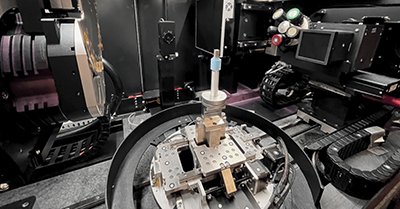New ORNL algorithm enables faster, safer inspection of nuclear materials
09/01/2025
A software algorithm developed by Oak Ridge National Laboratory (ORNL), USA, has reduced the time needed to inspect 3D printed parts for nuclear applications by 85%, it is claimed.
Researchers are now training the algorithm for Idaho National Laboratory (INL) to apply similar methods for irradiated materials and nuclear fuel.
Additive manufacturing, also called 3D printing, can enable the domestic fabrication of complex nuclear parts in a short time. The quality of these products is typically verified through computed tomography (CT) scans, which use X-rays to capture images of any weaknesses or errors in the internal structure.
ORNL’s new software algorithm uses machine learning to rapidly reconstruct and analyse the images to significantly cut down on the cost, time and number of scans needed to perform an inspection.
Researchers at INL applied ORNL’s new algorithm to analyse more than 30 3D printed sample parts in less than 5 h of scan time. It would have taken more than 30 h to complete each scan without the software, so this opens the door for potential applications with radioactive materials and fuels.
 | ||
| ORNL’s software algorithm uses machine learning to rapidly analyse images |
INL researchers often delay examining materials removed from a nuclear reactor for the safety of laboratory technicians. Radiation accrued during long X-ray CT scans can also wear on the detector, limiting its operating life and the accuracy of its images.
Shorter scans would mean less radiation dosage per scan and less waiting, while enabling higher-quality data and faster feedback to performance models.
“If we use this algorithm to reduce the scan time for radioactive materials and fuels, it will increase worker safety and the rate we can evaluate new materials,” said Bill Chuirazzi, an instrument scientist and leader of INL’s Diffraction and Imaging group. “Down the road it enables us to expedite the lifecycle of new nuclear ideas from conception to implementation in the power grid.”
ORNL researcher Amir Ziabari, who first developed the algorithm to produce faster, more accurate scans of 3D printed metal parts, is now training the software to do the same with radioactive materials and fuels.
The collaboration between ORNL and INL is expected to speed up the development and deployment of new reactor types to decarbonise the power sector.
The software is being supported through the US Department of Energy (DOE)’s Advanced Materials and Manufacturing Technologies (AMMT) programme to accelerate commercialisation of new materials and manufacturing technologies through demonstration and deployment.
www.ornl.gov